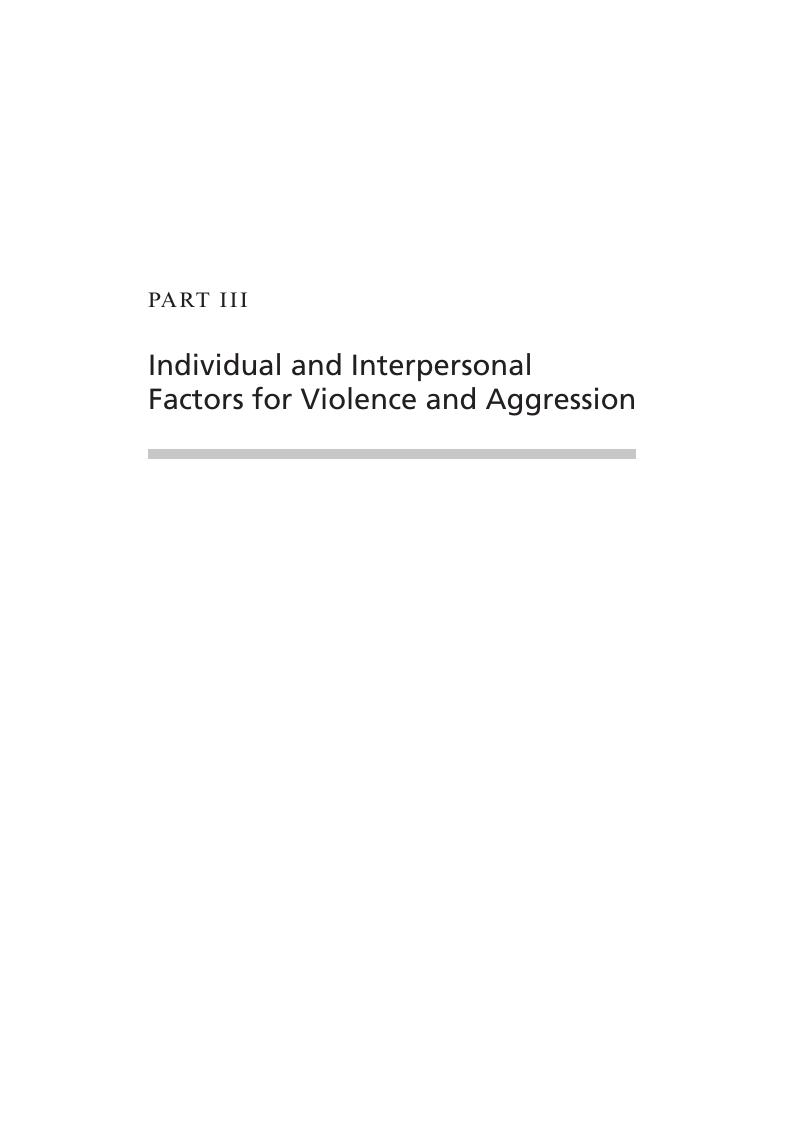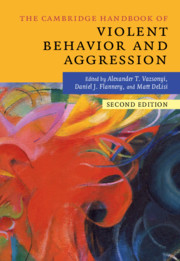Book contents
- The Cambridge Handbook of Violent Behavior and Aggression
- The Cambridge Handbook of Violent Behavior and Aggression
- Copyright page
- Dedication
- Contents
- Contributors
- Introduction: The Cambridge Handbook of Violent Behavior and Aggression
- Part I Introduction and Overview
- Part II Biosocial Foundations of Violence and Aggression
- Part III Individual and Interpersonal Factors for Violence and Aggression
- Part IV Contextual Factors for Violence and Aggression
- Part V Looking Toward the Future
- Index
- References
Part III - Individual and Interpersonal Factors for Violence and Aggression
Published online by Cambridge University Press: 30 July 2018
- The Cambridge Handbook of Violent Behavior and Aggression
- The Cambridge Handbook of Violent Behavior and Aggression
- Copyright page
- Dedication
- Contents
- Contributors
- Introduction: The Cambridge Handbook of Violent Behavior and Aggression
- Part I Introduction and Overview
- Part II Biosocial Foundations of Violence and Aggression
- Part III Individual and Interpersonal Factors for Violence and Aggression
- Part IV Contextual Factors for Violence and Aggression
- Part V Looking Toward the Future
- Index
- References
Summary

Information
- Type
- Chapter
- Information
- The Cambridge Handbook of Violent Behavior and Aggression , pp. 239 - 488Publisher: Cambridge University PressPrint publication year: 2018
